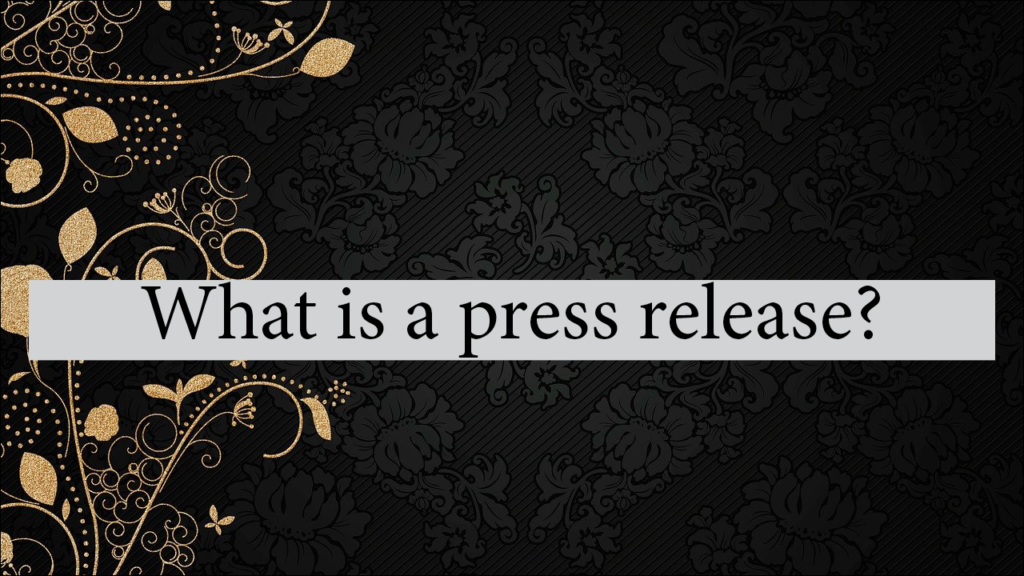In today’s fast-paced information age, effective communication is crucial for any organization or individual aiming to share their news, achievements, or announcements with the world. One powerful tool in the arsenal of communication strategies is the press release. Whether you’re a seasoned researcher or new to the world of public relations, understanding what a press release is and how to craft an impactful one can significantly amplify the reach and impact of your work. In this comprehensive guide, we will delve into the intricacies of press releases, address common questions researchers might have, and provide insights into creating compelling releases that resonate with your audience.
Table of Contents
- What Is a Press Release?
- Key Components of a Press Release
- Why Are Press Releases Important for Researchers?
- Crafting an Effective Press Release
- Frequently Asked Questions (FAQs)
What Is a Press Release?
A press release is a concise written communication designed to announce newsworthy information to the media and the public. It serves as a formal document that provides journalists, bloggers, and other members of the media with key details about an event, accomplishment, or development. Press releases are carefully crafted to capture attention, convey essential information, and encourage further coverage or inquiries. They are commonly used by businesses, nonprofit organizations, government agencies, and yes, researchers too.
Key Components of a Press Release
A well-structured press release comprises several key components that ensure its effectiveness:
- Headline: The headline is a brief, attention-grabbing statement that encapsulates the main point of the press release. It should be clear, concise, and engaging.
- Dateline: The dateline includes the release date and the originating location of the press release. This provides context for the news.
- Introduction: The opening paragraph of the press release outlines the most important information, often answering the “who,” “what,” “where,” “when,” and “why” of the news.
- Body: The body of the press release delves deeper into the details of the news. It can include quotes from relevant individuals, background information, statistics, and any supporting facts.
- Boilerplate: A brief description of the organization or individual behind the news. This section is often included at the end of the press release and remains consistent across various releases.
- Contact Information: Provide the contact details of a spokesperson or media relations person who can provide additional information or answer inquiries.
Why Are Press Releases Important for Researchers?

Press releases play a vital role in the world of research by bridging the gap between academic accomplishments and public awareness. Here’s why they matter:
- Wider Reach: Press releases allow researchers to reach a broader audience beyond academia, including journalists, policymakers, and the general public.
- Credibility: When published by reputable media outlets, press releases add a layer of credibility to research findings, enhancing the reputation of both the researcher and the institution.
- Knowledge Dissemination: Press releases facilitate the dissemination of groundbreaking research, contributing to the sharing of knowledge that can drive progress.
Crafting an Effective Press Release
Crafting an effective press release requires careful attention to detail and strategic communication:
- Clarity: Ensure your press release is clear and concise, avoiding jargon that might confuse non-expert readers.
- Newsworthiness: Focus on what makes your research relevant and exciting to a broader audience. Highlight the impact and significance of your findings.
- Engaging Content: Incorporate quotes, statistics, and anecdotes to make your press release engaging and relatable.
- Targeted Distribution: Identify the right media outlets and journalists that cover your research’s area of interest.
- Follow Up: Be prepared to respond to inquiries promptly and provide additional information as needed.
Frequently Asked Questions (FAQs)
Q1: Are press releases only for major research breakthroughs?
A1: No, press releases can be used to announce various research-related news, including studies, partnerships, conference presentations, and expert opinions.
Q2: Should I hire a professional to write my press release?
A2: While it’s not mandatory, professional PR services can help ensure your press release is well-crafted and reaches the right channels.
Q3: What’s the ideal length for a press release?
A3: A standard press release is typically between 300 to 600 words. Concise yet comprehensive content is key.
In the dynamic landscape of research communication, press releases serve as invaluable tools for researchers to share their work with the world. By understanding the components of a compelling press release and the strategies for effective distribution, researchers can amplify the impact of their findings, foster broader awareness, and contribute to the advancement of knowledge on a global scale.
In conclusion, if you’re looking for top-notch press release distribution services, visit our website at https://www.gibsongirlspublishing.com/ to learn more about how we can boost your media coverage and online visibility.
